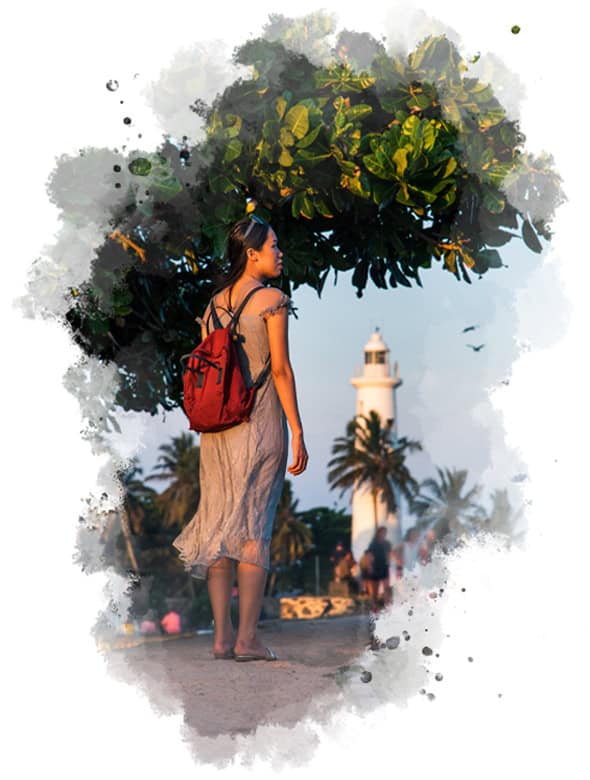
Galle, Sri Lanka
Things to do, weather & itineraries
Formerly a trading port for exotic goods and spices along the Silk Route, the coastal town of Galle is a crossover of European architecture and local traditions that stands as a testament to Sri Lanka’s colonial past. As a major city, Galle doubles as a heritage centre and a shopping hub, boasting of historical and architectural feats through the interplay between its ancient charm and modern lifestyle.
Of its many attractions, the city is best known for the Galle Fort—a UNESCO World Heritage Site with colonial buildings, roadside boutiques and cobblestone pathways that are largely reminiscent of 18th-century Holland. However, Galle also has a reputation for its aquatic sports, turtle hatcheries and quaint beauty, which make it the perfect addition to your island adventure.
The average daytime temperatures in Galle range from 25°C to 30°C (77°F to 86°F), only dropping to as low as 24°C (75.2°F) by nightfall. Travellers generally visit this region from mid-December to mid-April to experience the best weather conditions.
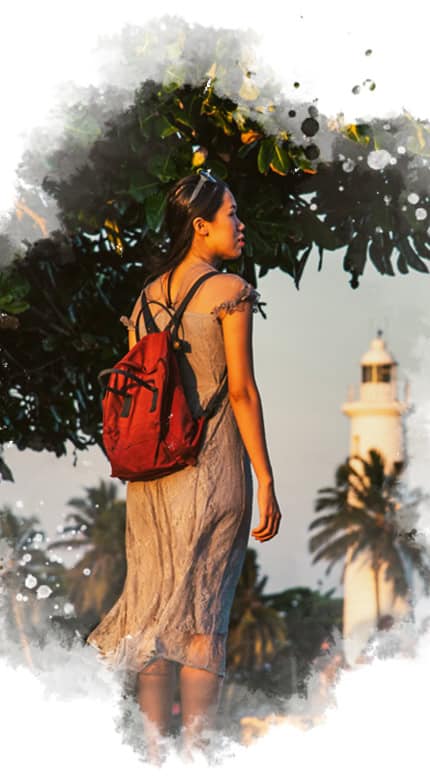
Galle, Sri Lanka
Things to do, weather & itineraries
Formerly a trading port for exotic goods and spices along the Silk Route, the coastal town of Galle is a crossover of European architecture and local traditions that stands as a testament to Sri Lanka’s colonial past. As a major city, Galle doubles as a heritage centre and a shopping hub, boasting of historical and architectural feats through the interplay between its ancient charm and modern lifestyle.
Of its many attractions, the city is best known for the Galle Fort—a UNESCO World Heritage Site with colonial buildings, roadside boutiques and cobblestone pathways that are largely reminiscent of 18th-century Holland. However, Galle also has a reputation for its aquatic sports, turtle hatcheries and quaint beauty, which make it the perfect addition to your island adventure.
The average daytime temperatures in Galle range from 25°C to 30°C (77°F to 86°F), only dropping to as low as 24°C (75.2°F) by nightfall. Travellers generally visit this region from mid-December to mid-April to experience the best weather conditions.
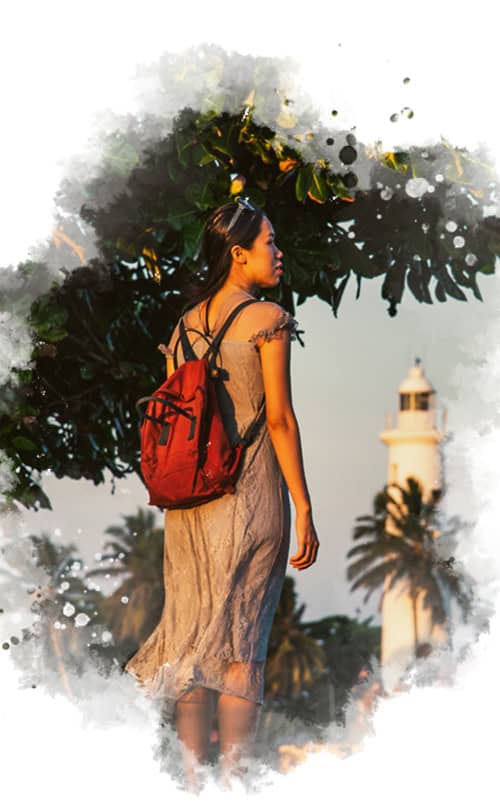
Galle, Sri Lanka
Things to do, weather & itineraries
Formerly a trading port for exotic goods and spices along the Silk Route, the coastal town of Galle is a crossover of European architecture and local traditions that stands as a testament to Sri Lanka’s colonial past. As a major city, Galle doubles as a heritage centre and a shopping hub, boasting of historical and architectural feats through the interplay between its ancient charm and modern lifestyle.
Of its many attractions, the city is best known for the Galle Fort—a UNESCO World Heritage Site with colonial buildings, roadside boutiques and cobblestone pathways that are largely reminiscent of 18th-century Holland. However, Galle also has a reputation for its aquatic sports, turtle hatcheries and quaint beauty, which make it the perfect addition to your island adventure.
The average daytime temperatures in Galle range from 25°C to 30°C (77°F to 86°F), only dropping to as low as 24°C (75.2°F) by nightfall. Travellers generally visit this region from mid-December to mid-April to experience the best weather conditions.
Tour itineraries featuring Galle
From learning about Sri Lanka’s colonial history to unwinding by the beach, Galle has much to offer with plenty of activities that can be completed within 2 to 3 days. For some guidance on how you can fit Galle into your tour of Sri Lanka, please refer to the sample itineraries below.
Tour itineraries featuring Galle
From learning about Sri Lanka’s colonial history to unwinding by the beach, Galle has much to offer with plenty of activities that can be completed within 2 to 3 days. For some guidance on how you can fit Galle into your tour of Sri Lanka, please refer to the sample itineraries below.
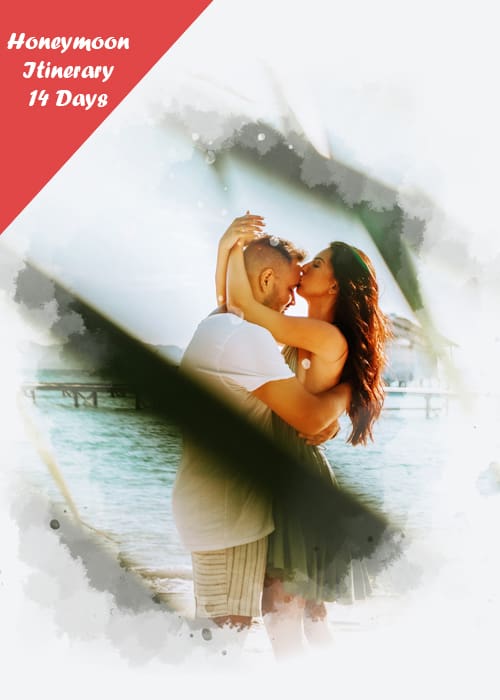
SL & MV honeymoon
Romantic honeymoon in Sri Lanka and Maldives. Celebrate your love with an amazing holiday in the tropics.

SL & Maldives Family
A perfect family adventure in the picturesque Sri Lanka combined with the pristine beaches of luxurious Maldives.

Sri Lanka with Toddlers
Enjoy the best of Sri Lanka with your little ones. A slow-paced family holiday for people travelling with toddlers.
Request a Free Quotation
Would you like to get our assistance to organize your Sri Lanka holiday? Drop us a message to get a tailor-made Sri Lanka holiday package that reflects your interests, budget, tour duration and the weather conditions of the month that you visit Sri Lanka.
Things to do in Galle
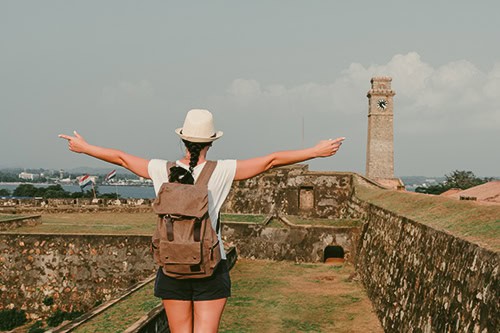
Although its construction is credited to the Portuguese, the city’s extensive fortifications of coral and stone are the work of the Dutch settlers, who transformed the fort into their headquarters before the arrival of the British. The collective influence of the European colonizers is reflected in the structures that remain within the fortified walls, all of which are a testament to the island’s history as a colony.
For example, the Galle Maritime Archaeology Museum was originally the largest warehouse in Asia in the 1670s. Today, it houses artifacts from local shipwrecks, such as old coins, bottles, and Chinese pottery that symbolizes Sri Lanka’s long-standing connection to China. On the other hand, the base of the famed clocktower on the Moon bastion contains a few statues depicting the Dutch military occupation of the fort.
The Dutch Reformed Church lies at the highest point in the fort, and it offers valuable insight into European architecture. With a white stone structure and tombstones that date back to the 1600s, this place of worship is one of the oldest Protestant churches in the country to remain active even today.
Most travellers also take photographs beside the Galle Lighthouse, which towers over the region at a height of 85 feet. Even though the original structure was destroyed in a fire, it was rebuilt in 1939, and its light has successfully guided many ships ashore.
After touring the bastions, you can pay a visit to the Old Dutch Hospital. While it was originally built to oversee the health of Dutch officers in the 17th century, it is now a shopping precinct with a variety of restaurants, coffeehouses and souvenir shops to choose from.
To conclude your tour of the fort, you can watch the sunset by its ramparts, and marvel at how the evening skies are gradually coloured in pastel pinks and fiery oranges to signify the end of a long day.
While bicycle tours are an option, most travellers prefer to walk around and explore the fort at their own pace. That being said, this attraction is best enjoyed in the early morning and the late afternoon, and it will require a minimum of 3 hours to experience everything that it has to offer.
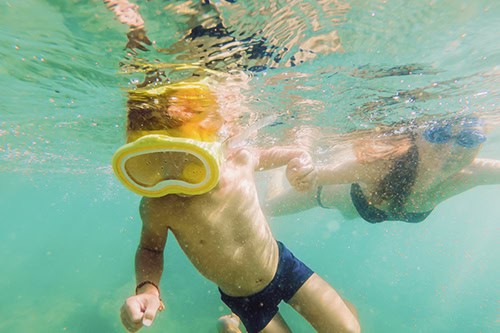
The pristine waters of Unawatuna Bay are a stone’s throw away from Galle, and they are made up of shallow areas that are frequented by all kinds of tropical fish. They also contain a small shipwreck that adds an exciting twist to your snorkelling adventure. On the other hand, the coral gardens of Hikkaduwa form a marine sanctuary that shelters up to 60 species of coral and over 170 species of reef fish.
There is also the lesser-known Jungle Beach Bay which, as its name suggests, is surrounded by a jungle. Its mild water currents make it the ideal spot for beginner snorkellers to see crabs, parrotfish, turtles, and other aquatic life.
Ideally, snorkelling should be attempted during the late mornings and early afternoons as the daylight will improve your underwater visibility. The average snorkelling trip lasts for 2 to 3 hours, which gives you plenty of time to venture into the shallow waters of Galle at your own pace.

The famed Dewata Beach is dotted with surfing schools along the coast, and the absence of sharp rocks and reefs in the area makes it the ideal spot for beginners and experts to hone their skills. That being said, the reef and beach breaks at Owakanda are less crowded, making it a suitable alternative for those who prefer to practice in private.
Narigama Beach is a common choice among thrill-seekers who are on the lookout for stronger currents. However, most surfers opt for Weligama Beach as its waves can be braved by beginners and experts with minimal effort. This bustling beach is less than an hour away from the city, so you will have plenty of time to spare once you get back from your surfing adventure.
The best time to surf in and around Galle is from mid-December to mid-April, especially if you are a beginner. That being said, do not forget to exercise caution at the beach since the currents can be unpredictable. If you are not careful, you may get caught by a rip current, which will carry you away from the shore when least expected.
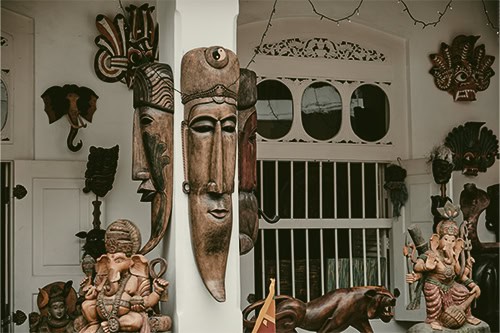
At the famed Peddlar Street, you can purchase a variety of souvenirs, such as handwoven sarongs, miniature crafts and intricate jewellery at affordable prices. On the other hand, the cobblestone pathways of the Galle Fort lead to roadside boutiques, where the locals sell their handcrafted wares in colonial mansions.
You can also combine your shopping tour with a visit to the nearest weaving factory and observe how cotton fabrics are woven traditionally. The few factories that continue to operate today offer tours of the weaving process, with the option to support local women by purchasing their fabrics. You can browse through a wide selection of shirts, bags, cushion covers, and various other products, and purchase some souvenirs to remember your time in Galle by.
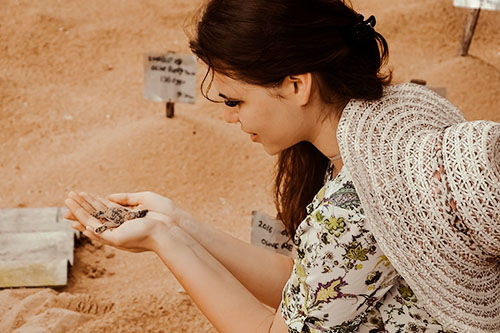
As a conservation effort, turtle hatcheries shelter the Olive Ridley Turtle, the Green Turtle, the Hawksbill Turtle, the Loggerhead Turtle and the Leatherback Turtle, effectively protecting them from predators and poachers. They also gather and relocate the eggs that are laid by female turtles to safer environments. Out of harm’s way, the hatchlings are then raised in large tanks until they are old enough to fend for themselves in the wild.
Apart from their educational tours that provide insight into turtle behaviours, most hatcheries let you watch as the hatchlings make the long journey back home. This event takes place as late as 6.00pm, and if you are on time, you may be asked to release one of the hatchlings yourself.
Please keep in mind that these hatcheries charge a small entrance fee for their upkeep. That being said, they are open throughout the year, so you can easily fit this excursion into your tour of Sri Lanka.
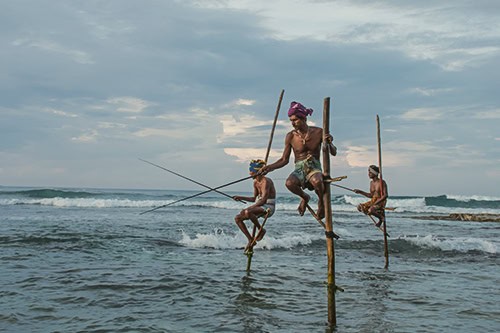
The origins of stilt fishing in Sri Lanka are unknown, but the practice has been a longstanding alternative for fishermen who cannot afford professional fishing equipment. In the absence of such equipment, they rely on wooden poles that are nailed to the shallow seabed, as well as fishing rods that are made of bamboo or kithul wood.
Despite its deceptively easy appearance, the art of stilt fishing is complex, and it has been passed down from generation to generation. As a test of patience, the fishermen are required to remain seated in silence for hours so as not to scare their potential catch away.
While stilt fishing has now become a dying art, it continues to be conducted in the shallow waters of Galle for the sole purpose of entertaining travellers. The small fee that they charge for photographing them will leave you with a worthwhile souvenir to remember your time in Galle by.
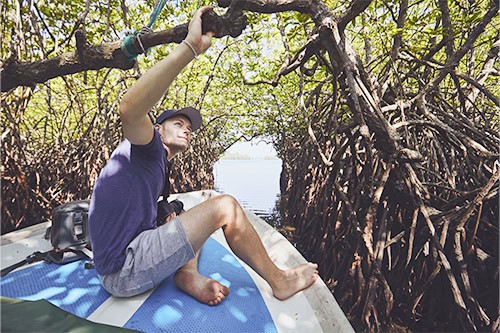
The history of Madu River can be traced back to the reign of the Sinhalese kings during a time in which the locals relied on its waters to transport items and access the mainland. Today, it is known for its high biodiversity as it houses 14 mangrove varieties along with 248 animal species and 303 plant varieties. The lagoon is also home to 64 islands, many of which have been submerged underwater. Those that remain can be accessed with ease during the boat ride.
You can enjoy a brief stopover at the largest island, Maaduwa, where more than 250 local families rely on the production of cinnamon oil and other cinnamon-based products for their livelihood. On the other hand, ancient folklore suggests that the Kothdoowa Temple on Kothdoowa Island was a temporary shelter for the Buddha’s sacred tooth relic that is now safeguarded within the Temple of the Tooth in Kandy.
There is also the Satha Paha Doowa or the “5 Cent Island” which gets its name from the resemblance it bears to the 5-cent coin that was once used in Sri Lanka.
With many islands to see and plenty of wildlife to spot, Madu River is best experienced in the evening. Journeying during this time will help you avoid the afternoon heat, and it will give you an opportunity to observe one of the other livelihoods of the local community—prawn fishing. This fascinating addition to your boat ride involves watching as the local fishermen row past your boat and use their lanterns to lure shellfish into traps.
Frequently Asked Questions
1. Is it worth visiting Galle Sri Lanka?
Definitely. While Galle is unmistakably a major city in Sri Lanka, its colonial mansions, cobblestone pathways and fortified walls merge to form a setting that is reminiscent of ancient Europe. However, its local influences can be seen in the array of boutiques and restaurants that line its streets. This crossover between the local and the West is one of the many reasons why travellers feel as though they have stumbled into a completely different world during their tour of the region.
What makes Galle so worth a visit is the insight it offers into what life on the island was like under the colonial rule of the Portuguese, the Dutch, and the British, as well as its many activities that are geared toward adventurers.
A casual tour of the fort can be enjoyed by families with children, and it can provide an exploratory element to your trip if you are travelling solo. On the other hand, thrill seekers can push their limits with extreme water sports while laidback travellers take it slow with a tour of the nearest turtle hatchery. Galle is also the ideal location to wind down from the adventure. Its gorgeous seascapes, unexplored hideaways and high biodiversity make it the perfect retreat for those who prefer to destress in nature.
All of these aspects have earned the city its reputation as one of the top destinations to visit when touring Sri Lanka, making it a vital part of most tour itineraries.
2. What is Galle famous for?
As a major city that doubles as a quaint coastal town, Galle gets its fame from the colonial history that is concealed within its fortified walls, the roadside boutiques that have transformed it into a shopping hub, and the sandy beaches in the vicinity that promise plenty of aquatic adventures.
The iconic fort that overlooks the southern coastal stretch is the city’s main attraction. Not only is it a heritage centre, but it also houses a thriving community of locals that welcome travellers with open arms. The many structures within this UNESCO World Heritage Site are steeped in a rich history of colonial rule. With ancient landmarks to uncover as well as mansions, museums and religious sites to discover, the Galle Fort is one of the must-sees in Sri Lanka.
To a lesser extent, Galle is known for offering a shopping experience that cannot be replicated in any other part of the island. Its quaint charm extends to its streetside stalls and boutiques that have converted the ochre mansions of the old into stylish stores that sell antiques and handcrafted souvenirs.
The sandy beaches in and around Galle are also popular among snorkelers and surfers, many of whom will agree that the city has some of the best spots for water sports. Whether you want to snorkel in the shallow waters or ride the waves at a secluded beach that is partially surrounded by a jungle, Galle has plenty of beaches to choose from with breathtaking sunsets that will make you appreciate the beauty of the region.
3. What is the best time to visit Galle?
The best time to visit Galle is from mid-December to mid-April, as this is when the region is least likely to experience heavy rainfall. The clear skies and tolerable temperatures during this time will not hinder your journey, so you will be able to complete your trip quickly without worrying about how the weather may affect your schedule.
4. Which is better Kandy or Galle?
Both Kandy and Galle have their fair share of advantages and disadvantages, but the question of whether one is better than the other can only be answered based on what you want to see.
Kandy is the better choice among travellers who prefer a spiritual and cultural tour of the island. This UNESCO World Heritage Site was the last independent kingdom of the Sinhalese before the British takeover in 1815, and it contains religious sites and ancient landmarks that were built during the reign of the Sinhalese kings. With performances of traditional dance at the Kandy Dance Show and daily service rituals at the Temple of the Tooth, Kandy stands as the cultural capital of Sri Lanka, showcasing the local community’s determination to preserve their culture and their Buddhist roots.
However, travellers who are intrigued by Sri Lanka’s colonial past tend to prefer Galle. Touring this coastal town offers insight into the island’s history of Portuguese, Dutch and British rule, and it highlights some of the challenges that the locals have faced to reclaim their land. Galle also has plenty of other experiences to offer—from embarking on a boat tour of the region’s flora and fauna to experiencing the thrill of aquatic sports, its activities appeal to everyone, and its location makes it the ideal retreat to unwind by the beach.
While some travellers prefer one city over the other, there are no disadvantages to touring both during your stay. If you have some time to spare, consider embarking on the main attractions in Kandy and Galle to make the most of your trip. But if you are running short on time and you are curious about Sri Lanka’s recent past, Galle is definitely the better choice.
5. How long do you need in Galle?
You will need 2 days to visit Galle’s main attractions at your leisure. However, you can easily extend your stay by an extra day if you wish to take it slow when experiencing everything that this coastal city has to offer.
More Tips for Your Holiday

"We have had our amazing driver taking us around Sri Lanka with our 15 month old daughter for the last two weeks. Everything has been organized for us and everything has been perfect.Anyone thinking about going to Sri Lanka with their little ones should book with Travellers Isle. Nothing has been too much trouble for them. All hotels have been fabulous and our driver has been so helpful, amazing with our daughter, professional and knowledgeable."

